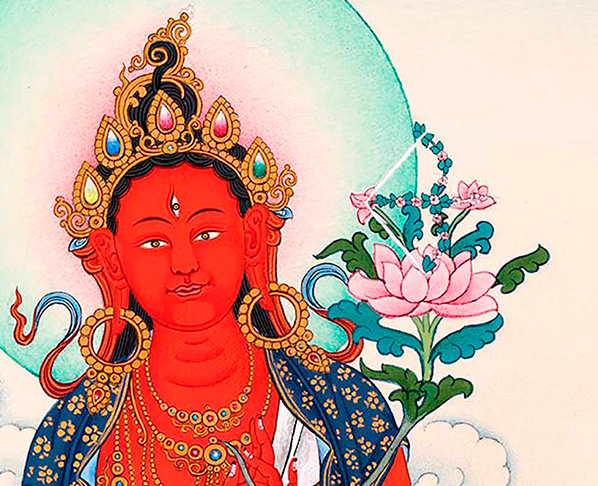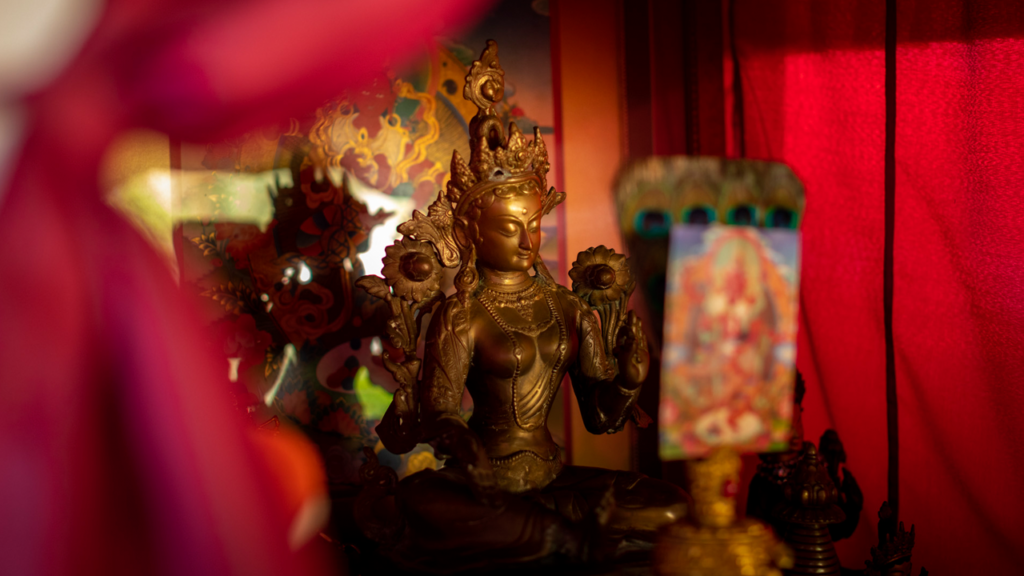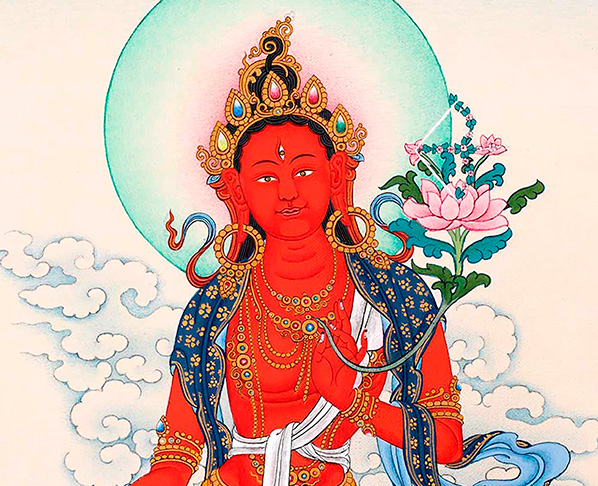Saga Dawa
Saga Dawa is one of the four most sacred periods in the Tibetan Buddhist calendar, marking the birth, enlightenment and parinirvana of Shakiamuni Buddha and, in 2023, takes place from 19 May to 18 June, with its culmination on the full moon of 04 June.
1) Practice schedule during Saga Dawa
Every year during Saga Dawa, Odsal Ling sets aside a few moments of the day for the sangha to do practice.
This year, we will have personal practice sessions from May 19 to June 3 and Powa practice sessions on May 21 and 27 and June 3.
See more information and how to participate in the boxes located just after question number 10.
2) Special program on Saga Dawa Duchen - June 04
The Full Moon of Saga Dawa is considered the holiest day in the Tibetan Buddhist calendar, when the enlightenment and parinirvana of Shakiamuni Buddha is commemorated. This year, Saga Dawa Düchen will be on June 4.
On this day, Lama Tsering invites everyone to participate in a big Vajrasattva accumulation.
The goal is to reach together 100,000 accumulations in a single day!
Attend one or more sessions of the practice and send in your numbers using the form that will be available on this page soon.
Time UTC-3
4am | Vajrasattva accumulation
6:30am | Morning Puja
8am | Concise Red Tara practice (only Portuguese)
9am | Vajrasattva accumulation
10am | Teaching with Lama Tsering
1pm | Life Saving Practice
2pm | Vajrasattva accumulation
4pm | Night Puja
5:30pm | Amitabha Practice
7pm | Vajrasattva Accumulation
8pm | Shower of Blessings Tsog
(links to the practices will be available soon)
Join us!!
3) What is Saga Dawa?
Saga Dawa is a sacred period for Tibetan Buddhism, when the birth, enlightenment, and parinirvana (passage into nirvana) of Shakiamuni Buddha are celebrated. It is also called the "month of merit," a period dedicated to generating merit through virtuous actions and positive thoughts.
It is said that during Saga Dawa virtuous actions are accumulated exponentially. So practitioners make an extra effort to accumulate merit during this period, such as practicing generosity, virtue, and compassion, and then devote it for the benefit of all beings.
4) How long does Saga Dawa last?
Saga Dawa takes place in the 4th lunar month of the Tibetan calendar. The sacred period begins at the new moon of that month, reaches its peak after 15 days, at the full moon, and extends until the next new moon.
All the days of Saga Dawa are sacred, but some are even more sacred, those commemorating the birth, enlightenment, and parinirvana of Shakiamuni Buddha.
At the peak of this period, the day of the full moon, occurs Saga Dawa Düchen, which is considered the most important holy day of the year for Tibetan Buddhism. It commemorates parinirvana and the enlightenment of Shakiamuni Buddha.
Saga Dawa 2023:
May 19 - Beginning of the period
May 27 - Tampei Düchen (birth of Buddha Shakiamuni)
June 04 - Saga Dawa Düchen (enlightenment and parinirvana of Buddha Shakyamuni)
June 18 - End of the period
Düchen means "great occasion"
5) What does multiplicity of actions mean, and how are they multiplied?
It means that all positive or negative actions of speech, body and mind are accumulated exponentially. During Saga Dawa, it is said that every action, positive or negative, is multiplied 100 million times. Therefore, it is important to engage in virtuous actions.
6) What are the ten negative actions that should be avoided and abandoned?
Body
Kill
Taking what was not given
Sexual misconduct
Speaking
Lying
Sowing discord
Rude talk
Useless chatter
Mind
Greed
Wishing ill for others
Wrong views
More details about each of these actions can be found in the book: "The Words of My Perfect Teacher" by Patrul Rinpoche
7) What are the positive actions we should cultivate and engage in?
"What makes an action good or bad?
It is not what it appears to be, nor whether it is big or small,
but the motivation, good or bad behind it."
Excerpt taken from the book, "The words of my perfect teacher"
Therefore any act done with a motivation to benefit beings becomes a positive action.
During Saga Dawa it is also common for practitioners to engage in activities cultivating the 6 Paramitas which are:
Generosity
Discipline
Patience
Diligence
Concentration
Wisdom
More details on each of these actions can be found in the book: "The Words of My Perfect Teacher", by Patrul Rinpoche.
8) How do I make a vow?
A vow is a commitment. There are very elaborate ceremonies for taking a vow, but it can also be done simply. It is not necessary to have any empowerment to make one or more vows. The most important thing is to make the vow with the pure motivation to benefit all beings until they are free of suffering and achieve immediate and definitive happiness.
The simple way is to stand in front of your altar (or anywhere) and visualize, in whatever way you can, Shakiamuni Buddha or your chosen deity, inseparable from your Lama, and before them, with them as witnesses, proclaim your vow.
You can make vows for one day, for many days, or even for the entire period of the Saga Dawa.
9) I am a beginner - can I take part?
Yes, you can take part in the Saga Dawa celebration, even if you are a beginner, by doing the concise Red Tara practice, which is performed in Portuguese and broadcast on Zoom daily. Besides this practice, you can also participate by watching Lama Tsering's teachings on Sundays. If you don't have empowerment, you cannot visualize yourself as a deity, but this doesn't prevent you from attending Tara practice in Tibetan, and the Tara and Guru Rinpoche Tsogs, and receiving the blessings of these practices. That is, in the more elaborate meditations, you can listen and accompany the practice by visualizing the deity in front of you. Check the schedule here: bit.ly/2RZQba2
10) What is the difference between Vesak and Saga Dawa?
Vesak, which is followed by some Buddhist traditions, is the commemoration of the birth, enlightenment, and parinirvana of Shakiamuni Buddha on the same day, on the full moon of May.
For practitioners of Tibetan Buddhism, the equivalent of Vesak takes place during the Saga Dawa period. In addition, within this period, there are specific days for commemoration of enlightenment and parinirvana, called Saga Dawa Düchen, and of the birth of the Buddha, called Tampei Düchen.






